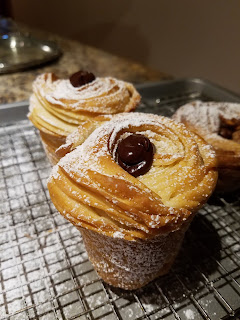Nancy Sweezy, Savior of Jugtown Pottery, Dies at 88
In the rolling Piedmont hills of North Carolina, potters were turning out fine work before the American Revolution. But by the 20th century, the tradition had faltered. Two passionate women, a half-century apart, saved it.
Nancy Sweezy, who died at the age of 88 in Cambridge, Mass., on Feb. 6, was the second.
Riding a surge of interest in folk arts in the 1960s and 1970s, Ms. Sweezy revived Jugtown, the famous pottery that the first of the two women, Juliana Royster Busbee, started in 1917.
Ms. Sweezy begged and borrowed $22,500 to buy the financially staggering Jugtown in 1968. She came up with new glazes to replace ones that used lead, and gave them names like Blueridge Blue and Dogwood White.
She recruited talented apprentices; leaned on influential acquaintances, including Rockefellers, for support; developed marketing strategies; and got Jugtown pottery into upscale Northern stores before selling the establishment in 1980. In 2006, the National Endowment for the Arts designated Ms. Sweezy “a national treasure,” saying that her efforts had “helped inspire a revival of the traditional pottery community.” The number of potteries in the area around Seagrove, N.C., rose from seven in 1968 to more than 100.
Mary Farrell, an expert Seagrove potter who apprenticed at Jugtown, said in an interview that “there wouldn’t even be a pottery area here” had Ms. Sweezy not come.
Ms. Sweezy became involved in Jugtown while shopping for traditional crafts in North Carolina to stock a shop she owned in Cambridge.
By contrast, Ms. Busbee fell in love with a striking orange plate she saw at a county fair in North Carolina. She and her husband, Jacques, a mural painter, scouted the area around Seagrove to find descendants of potters from Staffordshire, England, who arrived as early as 1740.
They found a few potters dabbling in the old traditions by making plates and pickle jars to satisfy local demand. The Busbees moved into a log cabin in a settlement they named Jugtown, the generic name for rural potteries that supplied earthen vessels to moonshiners.
In their rustic new home, the Busbees nurtured the resurrection of old ways, sometimes in new styles. They opened a tearoom in Greenwich Village, and later a store on the Upper East Side, to sell Jugtown products.
Eleanor Roosevelt pointed out Jugtown pottery by name as she passed a store window in North Carolina in 1934, according to a report in The New York Times. Tiffany & Company carried the brand.
When Ms. Sweezy and her daughter Lybess came shopping in March 1968, they learned Jugtown was in danger of closing.
“Mother and I looked at the log cabin house and the kilns which were falling apart,” Lybess Sweezy told The Times in 1969. “And we made up our minds to buy it in an hour.”
Nancy Sweezy was born Nancy Thompson on Oct. 14, 1921, in Flushing, Queens. After her parents divorced, she was adopted and became Nancy Adams. She attended the School of the Museum of Fine Arts in Boston and later worked in the research branch of the Office of Strategic Services, the spy agency.
She was assigned to Berlin and would later relate an experience she had there: a diplomat interested in courting took her inside Hitler’s bunker.
In the 1960s she was president of the board of Club 47, later known as Club Passim, a coffeehouse that was at the epicenter of the folk music craze in Cambridge. Through folk music and crafts, she met Ralph Rinzler, who did fieldwork for the Newport Folk Festival. He helped Ms. Sweezy get started at Jugtown before leaving to start the Smithsonian Folklife Festival.
It was an adjustment. The arrivals had to carry water in buckets until a new well was drilled.
But Mr. Rinzler said in a 1996 oral history that Ms. Sweezy’s “very gentle way of making suggestions” helped local people not see her “as some Yankee coming in and running the show.”
Ms. Sweezy later helped Asian refugees develop traditional crafts for the American market, wrote and edited books, and organized museum exhibitions devoted to Southern pottery, Armenian crafts and other topics.
Ms. Sweezy’s marriage to Paul Sweezy, the influential leftist economist, ended in divorce, as did a brief earlier marriage to Bill House. She is survived by her son, Sam; her daughters, Lybess and Martha Sweezy; five grandchildren; and four great-grandchildren. She died of congestive heart failure, Lybess Sweezy said.
In 1978, in his syndicated column, James Kilpatrick marveled that eight years earlier Ms. Sweezy had repaid a $2,500 state grant, which she had used to buy new kilns, even though paying back the money had meant putting off buying a truck.
“There are others,” he quoted her as saying, “who need help more than we do.”


Comments
Post a Comment
Comments are moderated to prevent spam. May take a while to see them posted.